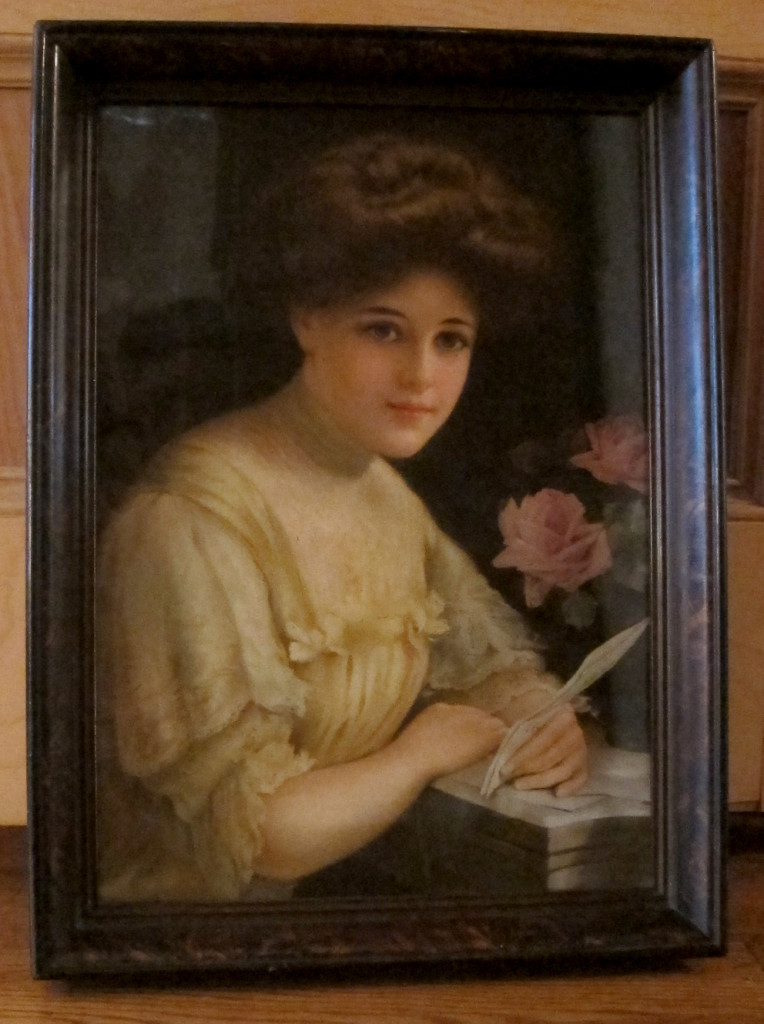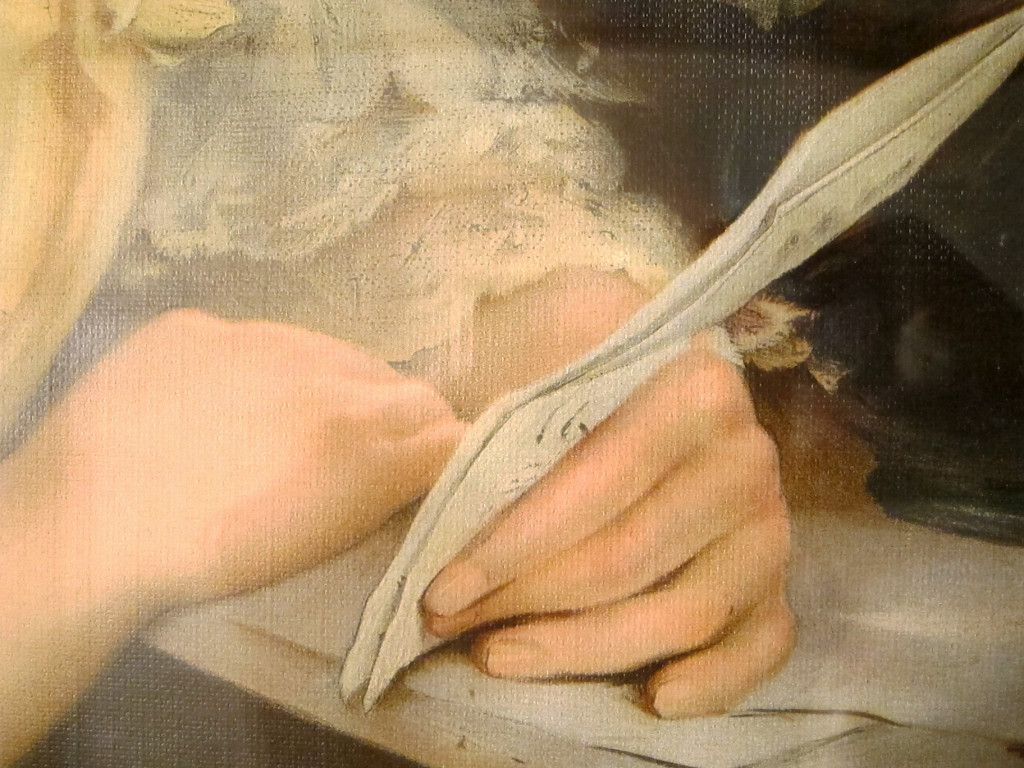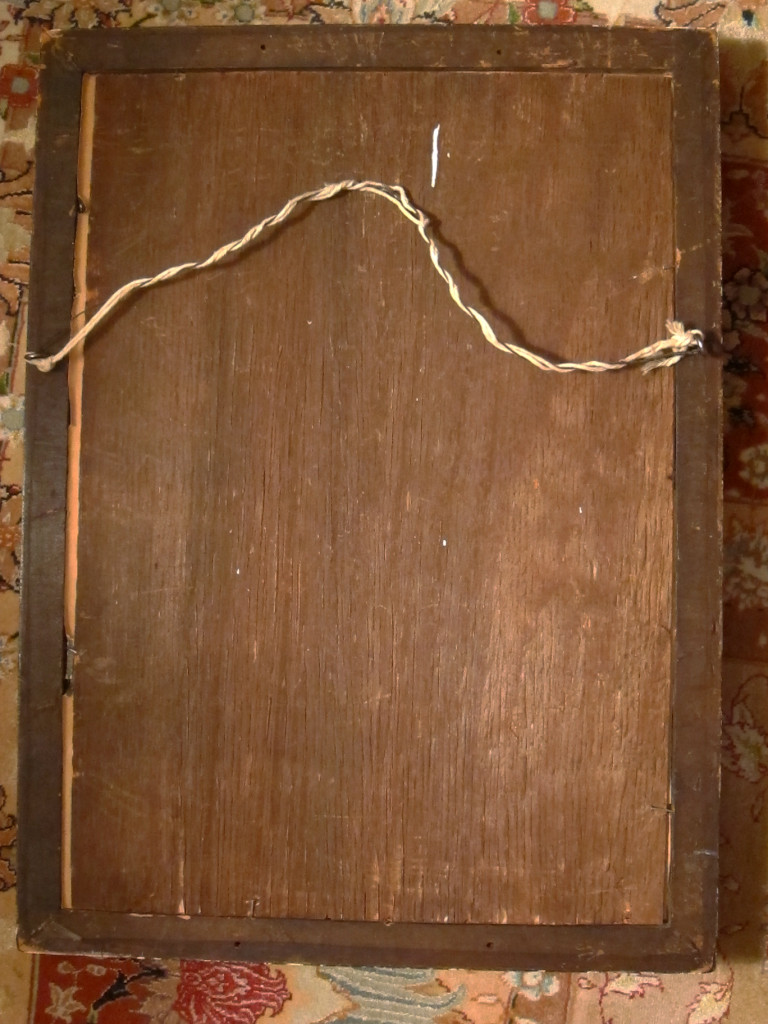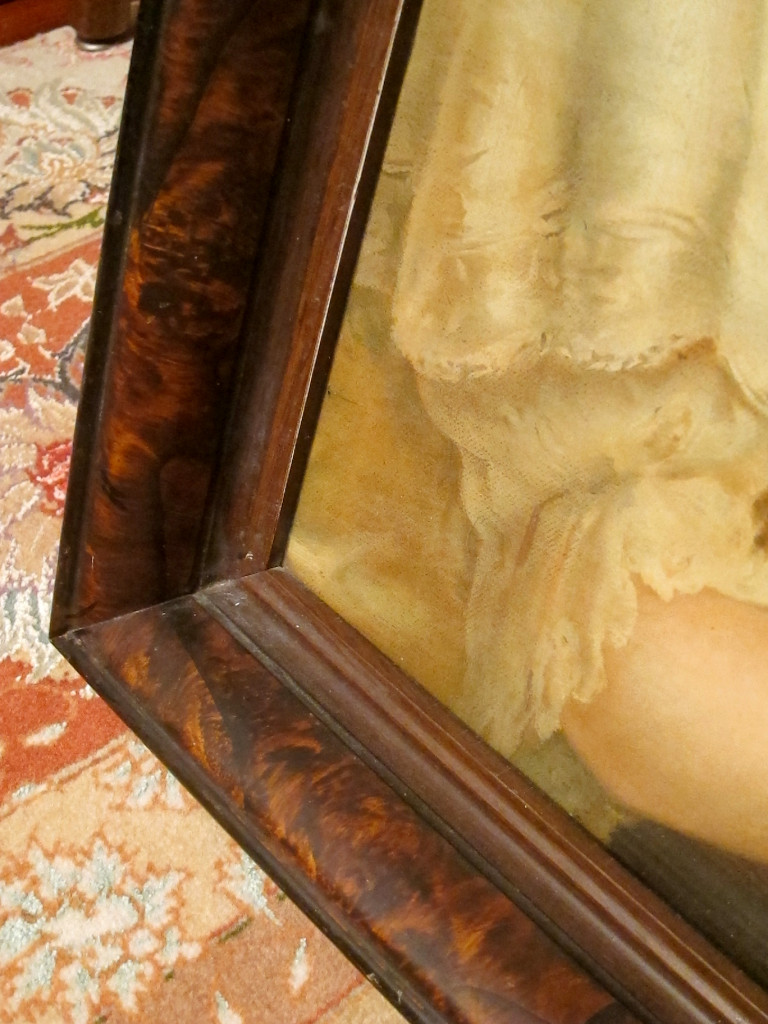
The tag read “Victorian-era painting of girl in a mahogany frame with original wavy glass.” Even though I knew the portrait wasn’t a painting but a print, possibly made as recently as the 1970s, still I bought the thing after getting the price knocked down. The subject of the picture, and the way it was framed, spoke to me. I figured I’d learn what I’d bought after getting it home.
Of all the representational art that’s out there, agreeable pictures of people are the hardest to find. I can’t afford fine portraiture. This print, whenever it was made, is an example of an inexpensive machine-made reproduction. Mechanical printing meant that people of modest means could afford to hang facsimiles of art in their homes.
On inspection, my purchase appeared to be a newer print in an older frame. The girl’s hairstyle and dress came in fashion after 1900, so the print was, at best, ‘Edwardian.’ (Queen Victoria died in 1901. Her son Edward succeeded her as monarch. His reign was unfortunately brief—he died in 1910.) The girl’s pompadour hairstyle and elaborately decorated fitted blouse with mutton sleeves identify a scene set circa 1905.

Inspecting the print through the glass revealed more proofs of a picture made in the mid-20th century. The paper was coated and had an all-over weave that showed strongly through the ink. (Click on the picture to enlarge.)
Color lithography came into widespread use in the late-nineteenth century. My print was too smooth and shiny to be a ‘chromolithograph,’ though. In the end, I decided it was an example of offset lithography, invented by Ira W Rubel. If so, my print was made after 1918.

The frame had an old and heavy board for backing, which was warped. The bowing partly accounted for the picture’s wavy appearance. It was slightly distorted from not having been pressed tight against the glass. The nails were newer, and the backside of the paper was visible along one edge.
 The paper was another clue to dating. Americans began using wood pulp to make paper around 1850, but it continued to be heavily used to print ephemeral materials (such as newspapers and paperbacks) until around 1950. The paper is acidic and bound to deteriorate: eventually it turns yellow and brittle, like the bit above. The paper’s fragility persuaded me against removing the backing to examine the print or the frame more closely. I had purchased a work that, like the youth of its subject, was destined to decay.
The paper was another clue to dating. Americans began using wood pulp to make paper around 1850, but it continued to be heavily used to print ephemeral materials (such as newspapers and paperbacks) until around 1950. The paper is acidic and bound to deteriorate: eventually it turns yellow and brittle, like the bit above. The paper’s fragility persuaded me against removing the backing to examine the print or the frame more closely. I had purchased a work that, like the youth of its subject, was destined to decay.

In the end, the frame alone justified the price I paid. Its edges are deeply recessed (more than 2 inches), and its rails are convex. The outer edges are painted black, while the rails sport a tortoiseshell pattern or burl. The girl’s direct gaze and the frame’s perpendicular edges communicate intimacy. It doesn’t matter to me whether the components of this work date from different periods or were put together later. Together, they are sweet and charming, and make up a harmonious whole.

Pat Price says
Love this blog, Celia. Wow. What fun!
Celia says
Thank you, Pat. Good to hear from you!
harley says
Gee, that was really wonderfully written! I so enjoyed reading it. The information you managed to sleuth out about the picture/painting is remarkable. I agree with the comment Pat made-what fun !
Celia says
Thank you, Harley. I love antiquing and the world of prints too. Maybe someone will write in who knows something about the frame!